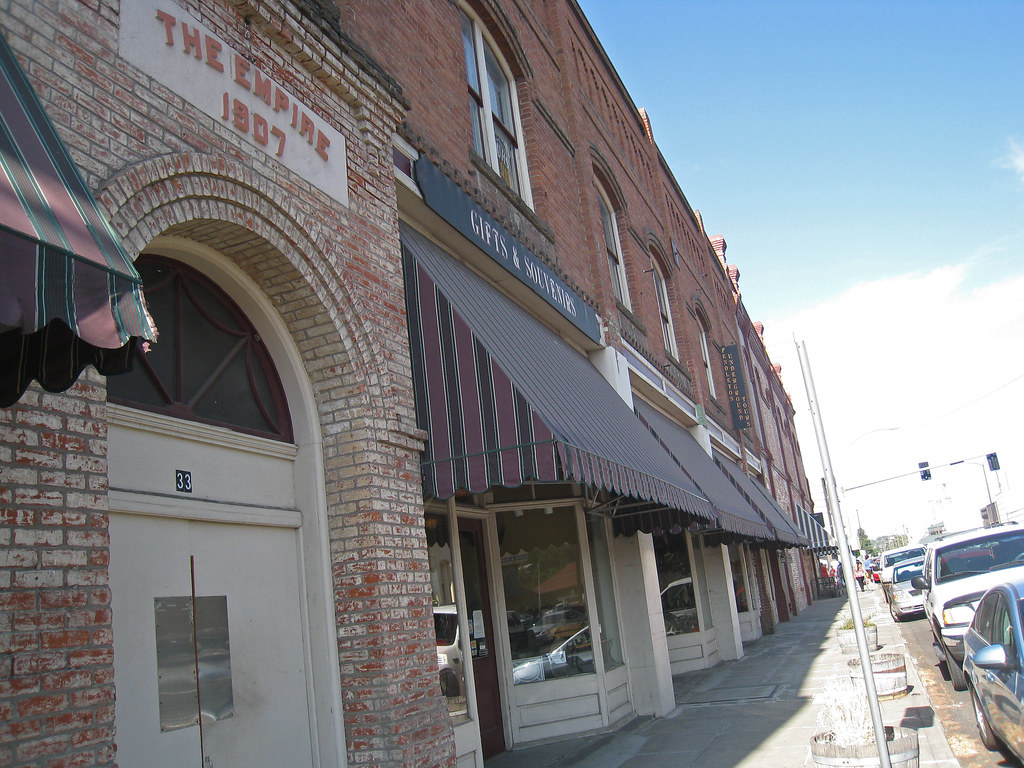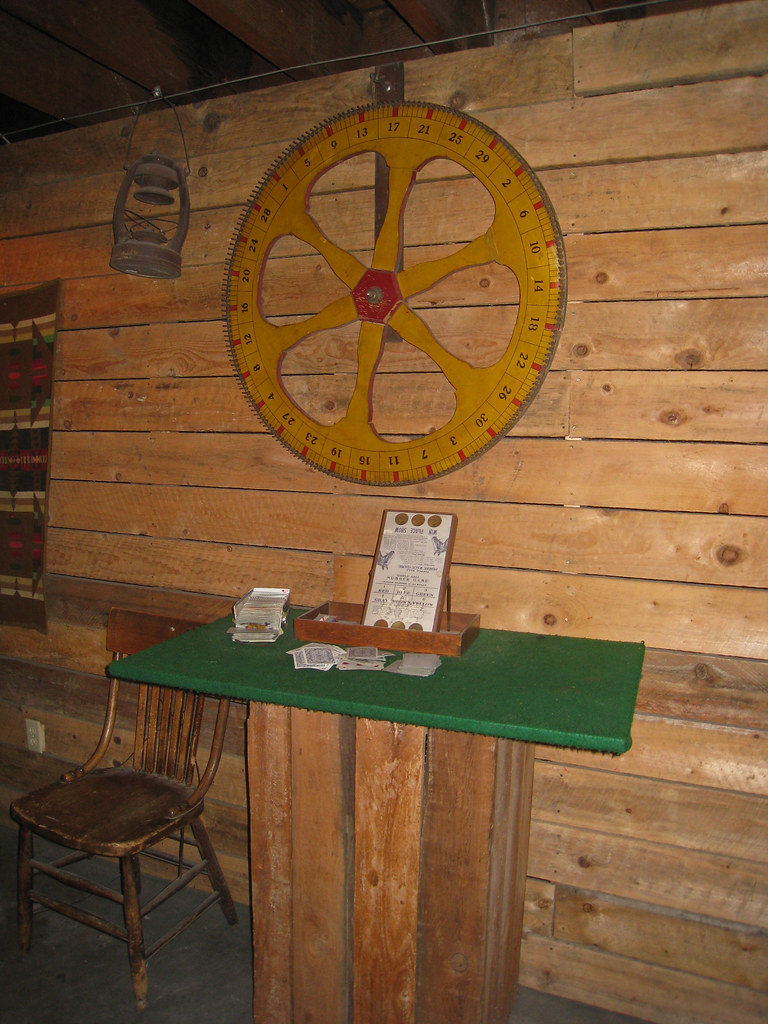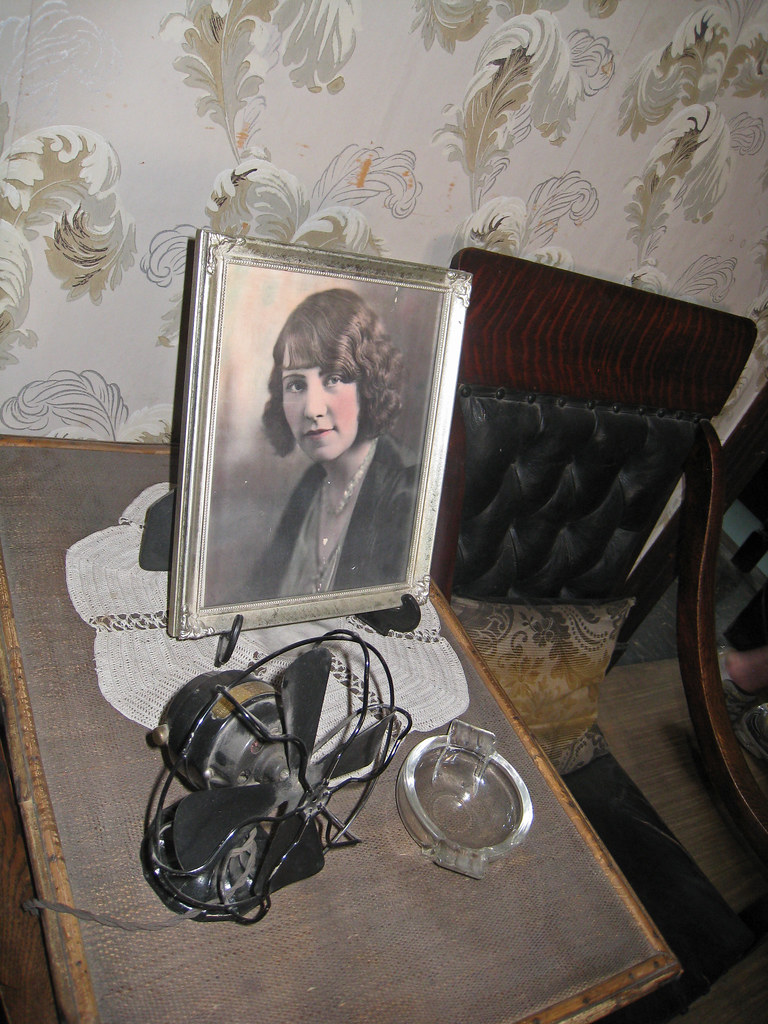Eastern Oregon Trip: Pendleton
 I packed quite a lot of plans into this little weekend trip. (Here's a map.) I didn't expect we could do everything, but I was prepared with possibilities depending on our mood. Our stop in Pendleton depended on how our drive along I-84 went, and whether we got a timely start in the morning. Fortunately, the last tour of the day of Pendleton's Underground happens at 2:30 pm, so we didn't have to make it a very early morning start. After about 4 hours of driving, it was a good time to make a stop, anyway. We got there with just enough time to grab some lunch...simple sandwiches across the street...and wait a few minutes for the tour.
I packed quite a lot of plans into this little weekend trip. (Here's a map.) I didn't expect we could do everything, but I was prepared with possibilities depending on our mood. Our stop in Pendleton depended on how our drive along I-84 went, and whether we got a timely start in the morning. Fortunately, the last tour of the day of Pendleton's Underground happens at 2:30 pm, so we didn't have to make it a very early morning start. After about 4 hours of driving, it was a good time to make a stop, anyway. We got there with just enough time to grab some lunch...simple sandwiches across the street...and wait a few minutes for the tour.
 Our first stop was a western barroom underground. Oregon had experienced a gold rush later than the California Rush. Our guide told us how bartenders would measure gold dust in payment for drinks, but as they did so, they would spill some grains along the bar. After payment and poured drink, they would swipe it onto the floor with a cloth, and near the end of their shift, would tromp around in the mud, come back behind the bar, then pick up the gold dust off the floor with the mud on their boots. Hmmm, sounds like a good story, but true? Our guide said that's how bartenders got into the habit of wiping down the bar even when not needed. Now that definitely sounds made up, because I thought it was due to health codes. All in good fun. In the same vein, the Chinese laborers would sweep up the barroom floor at the end of the night, and they would get all kinds of gold dust out of their sweepings.
Our first stop was a western barroom underground. Oregon had experienced a gold rush later than the California Rush. Our guide told us how bartenders would measure gold dust in payment for drinks, but as they did so, they would spill some grains along the bar. After payment and poured drink, they would swipe it onto the floor with a cloth, and near the end of their shift, would tromp around in the mud, come back behind the bar, then pick up the gold dust off the floor with the mud on their boots. Hmmm, sounds like a good story, but true? Our guide said that's how bartenders got into the habit of wiping down the bar even when not needed. Now that definitely sounds made up, because I thought it was due to health codes. All in good fun. In the same vein, the Chinese laborers would sweep up the barroom floor at the end of the night, and they would get all kinds of gold dust out of their sweepings.
In the same room he pointed out a simple wheel with numbers and pegs, telling us it was donated by Pendleton Woolen Mills. Back in the day, he said, the company would give sellers the opportunity to spin for the price of their wool.

 Whenever you're in a Western town or city and see those purple glass squares in a sidewalk, that means there is, or was, tunnels underground there. It's actually magnesium glass prisms. The prisms start out clear, but the sun turns them purple. They're designed to focus and amplify the light in the tunnels. The tunnels are designed to provide one stop for delivery, with individual deliveries to businesses branching out underground, rather than on the busy street. Nothing nefarious about the original intention, despite the legends of Shanghai Tunnels, opium dens, and speakeasies (though it seems these often turned into those). The panels are really beautiful from underneath (right photo). Unfortunately, an inept business destroyed all but two full panels when it rebuilt the streets and sidewalks of Pendleton. They were supposed to put the panels back in the sidewalks when they created the boardwalk style cement, but instead ground up the glass and recycled it. I want to ask, what idiot thought those things weren't worth something?! Or maybe they weren't idiots, and sold the prism panels while saying they accidentally destroyed them?
Whenever you're in a Western town or city and see those purple glass squares in a sidewalk, that means there is, or was, tunnels underground there. It's actually magnesium glass prisms. The prisms start out clear, but the sun turns them purple. They're designed to focus and amplify the light in the tunnels. The tunnels are designed to provide one stop for delivery, with individual deliveries to businesses branching out underground, rather than on the busy street. Nothing nefarious about the original intention, despite the legends of Shanghai Tunnels, opium dens, and speakeasies (though it seems these often turned into those). The panels are really beautiful from underneath (right photo). Unfortunately, an inept business destroyed all but two full panels when it rebuilt the streets and sidewalks of Pendleton. They were supposed to put the panels back in the sidewalks when they created the boardwalk style cement, but instead ground up the glass and recycled it. I want to ask, what idiot thought those things weren't worth something?! Or maybe they weren't idiots, and sold the prism panels while saying they accidentally destroyed them?
Also on this tour we saw Hop Sing's Laundry, a recreation of an early Ice Cream shop, an opium den, quarters for Chinese men, along with their Chinese jail, a big stakes poker room, a speakeasy, along with the requisite bullet holes in the tin ceiling, a butcher's shop, along with one of the earliest ice-makers, and a brothel, though the brothel tour was above ground. In reality, the ice cream shop and the butcher shop were above ground, while the production of the foods were below ground, but hey, it's a museum of sorts.
 In some cases there was water in the tunnels. Sometimes this was cause for a business to set up shop, like the ice cream makers and the butchers. The butchers dug a pit in their tunnel, filled it with brine water they cooled with ammonia compression (who knew this was used for early refrigeration?), and fresh water was placed in tall metal containers. They then sold the ice.
In some cases there was water in the tunnels. Sometimes this was cause for a business to set up shop, like the ice cream makers and the butchers. The butchers dug a pit in their tunnel, filled it with brine water they cooled with ammonia compression (who knew this was used for early refrigeration?), and fresh water was placed in tall metal containers. They then sold the ice.

Our guide told us he was sad to learn of this when he took this job, that there were sundown laws in Oregon. No person of color could be on the city's streets after sundown. This was why the Chinese men (only Chinese men were allowed to emigrate to the US, not women) lived in the tunnels. Their "Chinese jails" were for each other...to keep someone from going above to get some air. If he did, he could be shot by the whites, and the shooter would not be charged.
As I search around, I find this was an "unwritten law." While Oregon was not a slave state, it was indeed written into law that Blacks could not settle here (exclusion laws), and these "sundown laws" seem to be an extension of that racist institutionalization. (Let me just say, if I haven't already, that an MCL card holder can access all of the Oregonian's archives, as well as JSTOR, where one can access many journals, images, letters, and other primary sources. Included in JSTOR, Oregon Historical Quarterly.)
According to our guide, up until 1953, there were 18 brothels and 32 bars in Pendleton. That all ended when a new minister came to town, didn't like the sin of the city, and observed the brothels to take names and force the city to close all the brothels down. Gotta love morality by coercion. There are still many upper stories of buildings, he pointed out, that are closed up, sealed since the day the prostitutes were sent out of town. The one we toured had only been unsealed in recent years, revealing many belongings that were never retrieved.
One madame stuck around, sneaking back into town. We learned that unlike other brothel managers, she treated her girls well: she covered all their expenses; paid them 50/50; and taught them life skills so they could move on from the business, even get married. Madame Stella would tour the town with a wagon load of groceries for the down and out, and have a visiting minister give sermons in her brothel so her employees could also convene with God because, of course, they weren't allowed in churches. Her funeral, our guide said, was the second-most-attended in Pendleton's history, after the sheriff who was killed in the line of duty.
The rest of the photos, and more of the story, can be found here. The whole tour took an hour and a half.





No comments:
Post a Comment